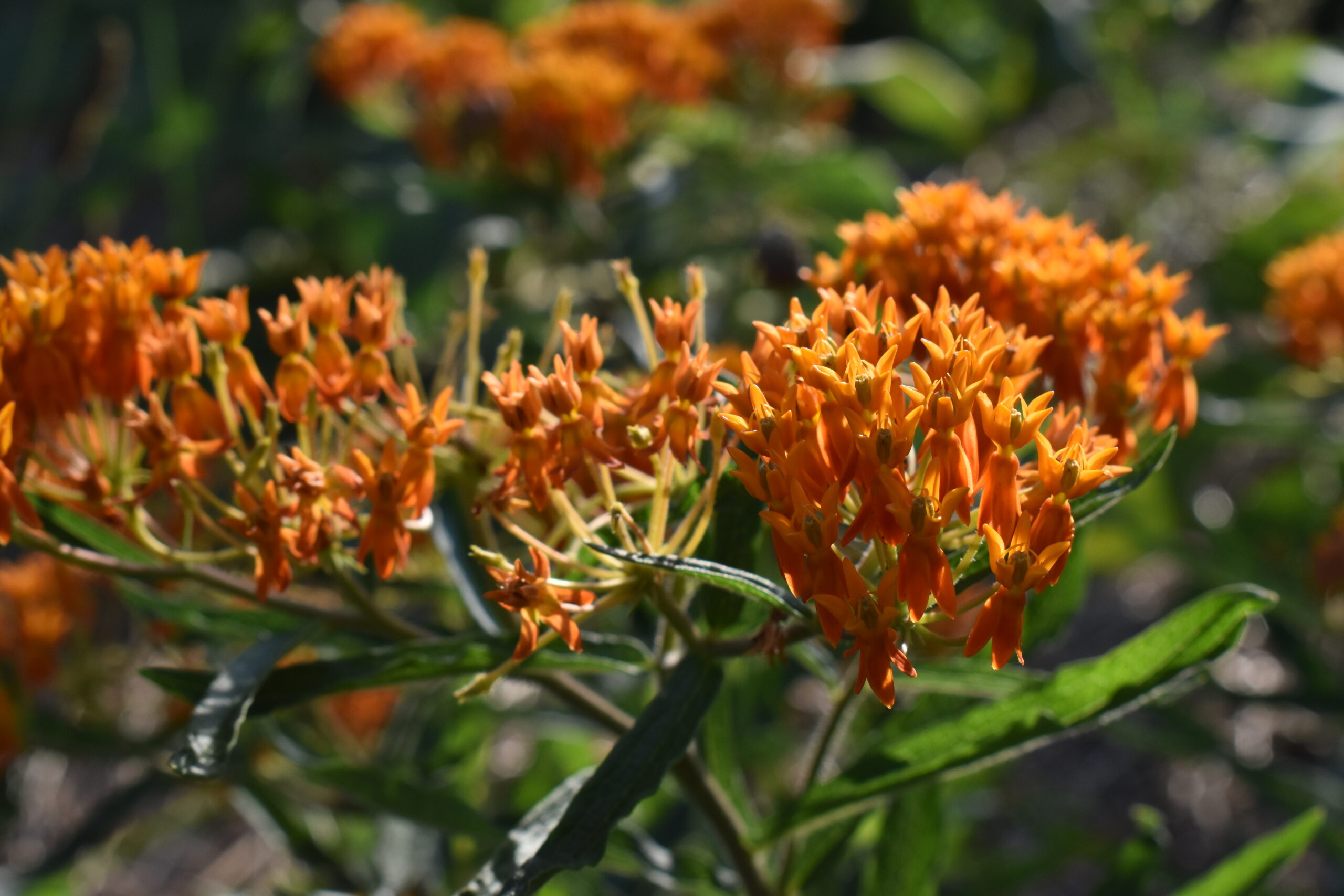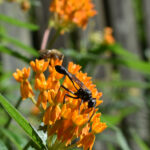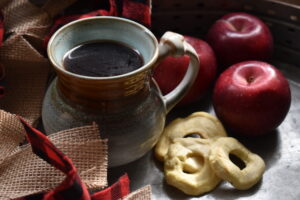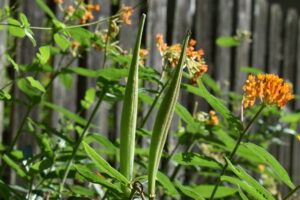Links contained in this post and elsewhere on my website may include affiliate links. When you make a purchase through these links, I earn a commission at no additional cost to you. I only link to products and services that I love - and that I think you will love, too!
Pleurisy root, Asclepias tuberosa, is a milkweed with a storied herbal history. It was influential in the Eclectic tradition in the United States in the late 1800s, which drew on Native American uses of the plant. Showy orange and yellow pleurisy root flowers bloom from late spring through the end of summer, but herbalists use the root.
Which plant are we talking about?
Pleurisy root is an example of a plant with several common names. For instance, it is often called milkweed. My grandmother called it butterfly weed and only used milkweed for A. syriaca.
However, A. tuberosa is usually listed with other Asclepias species in seed catalogs as “orange milkweed” or by the variety name like “Hello Yellow milkweed” or “Gay Butterflies milkweed.”
Interestingly, unlike other milkweeds, pleurisy root has woody stems and less of the milky sap common in Asclepias spp. In addition to being a traditional herbal remedy, this plant is vital for pollinators. I’ve seen bees, butterflies, and wasps congregating on my plants.
Other common names listed in older literature include:
- orange swallow-wort
- silkweed
- tuber root
- wind root
- white root
- flux root
- Canada root
Because this herb has so many common names, it’s essential to base your identification on the scientific binomial Asclepias tuberosa.
Barton’s entry on butterfly weed
When Dr. Barton writes about butterfly weed in 1818, he notes that it enjoyed popularity and widespread use at that time. He confesses that he only used it himself a few times at that point but seemed very impressed with the results. However, he also noted that many of the claims circulating about it seemed overblown.
It seems that herbs could be all the rage in the 1800s as readily as they are now. Wild claims aside, according to Barton, it makes a good diaphoretic and children’s remedy. It is also a reliable herb for the lungs. Other interesting facts from Barton:
- The common name wind-root comes from people using the tea for gas and bloating.
- It is a digestive tonic
- primarily a lung herb
- promotes healthy sweating during fevers
Rafinesque and A. tuberosa
Ten years later, we find the writings of C. S. Rafinesque, an early American botanist and polymath. He includes the popular uses of many plants in his books. An entry on butterfly weed is found in his book, Medical Flora (1828).
I like reading Rafinesque because he includes many everyday uses of plants, and not just the medicinal ones. Key takeaways from his work include:
- the down from the seed pods mixes well with cotton, wool, flax, and silk for spinning
- milkweed down is used in commerce during that time for making beds and pillows
- paper is made with the down and the plant stalks
- popular remedy of the day for colic and lung complaints
I think it’s interesting to think about how common this herb must have been at that time. He writes that a cubic foot of the down weighs a pound and a half. In my experience, a milkweed pod produces a good-sized handful of fluff. But a cubic foot of fluff? How many plants would that take?
In King’s American Dispensatory, we find a passage:
“For miles along the railways clusters of the rich, deep orange flowers of the butterfly weed, as it is called, bedeck the fields, a sight perhaps more pleasant because it blooms when the majority of showy plants are less abundant.”
King’s American Dispensatory
And all of the sources I mention here talk about how common it was, especially in Georgia. Nowadays, you’ll only find it growing sparsely along the roadsides or sometimes in hedgerows. Or in gardens.
Pleurisy root in King’s American Dispensatory
By the time we reach 1898, the writings on butterfly weed are much more detailed. Felter and Llyod, prominent Eclectic physicians of the day, provide more information. At this point, they note it is less popular than it once was. However, they consider it very safe and deserving of a revival.
They appreciate using it for:
- bringing on a sweat to break fevers
- toning the lungs and bringing them back into a balanced, healthy state
- dry or wet coughs (perceived normalizing action)
- calming inflammatory conditions of the lungs
- intercostal pain
- rheumatism
- digestive tonic
- lowering blood pressure
- recovering from colds and flu
They also present the idea of butterfly weed for “insensible perspiration.” So butterfly weed has a reputation for opening the pores and releasing skin tension to allow sweating during a fever. But it also restores the healthy balance of fluid loss through the skin that is happening all the time.
The Eclectic Materia Medica’s entry on pleurisy root
By the 1920s, Felter still considers pleurisy root a very valuable herb. For the most part, he writes of the same indications in King’s American Dispensatory.
It’s interesting, also, that he shifts from a strict focus on the mucosal lining of the lungs and includes an additional action. He states that its possible pleurisy root may influence the bronchial arteries and restore proper function and blood flow.
He says of pleurisy root,
Altogether asclepias is one of the most kindly acting and safest agents in the materia medica for one that accomplishes so much. One can scarcely do harm with it.
Felter, The Eclectic Materia Medica
However, he does note that if “carried too far,” pleurisy root acts as an emetic! It will cause nausea and vomiting in large doses.
Remembering pleurisy root’s herbal past
When you catch a glimpse of butterfly weed growing by the roadside or in your garden, I hope you will remember its herbal history. This beautiful native wildflower is worthy of our respect for its place in nature as a butterfly plant. But it’s also entwined with our history in ways few people fully understand.
References
Barton, W.P.C. (1818) Vegetable Materia Medica of the United States. https://www.henriettes-herb.com/eclectic/w-barton/asclepias.html
Felter, H.W. (1922) The Eclectic Materia Medica, Pharmacology and Therapeutics https://www.henriettes-herb.com/eclectic/felter/asclepias-tube.html
Felter, H.W.; Llyod, J. U.; (1898). King’s American Dispensatory. https://www.henriettes-herb.com/eclectic/kings/asclepias-tube.html
Rafinesque, C.S. (1828) Medical Flora, or Manual of the medical botany of the United States of America. https://www.henriettes-herb.com/eclectic/rafinesque/asclepias.html





